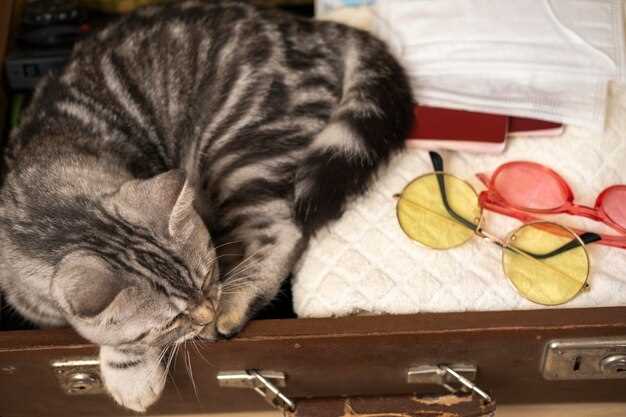
Are you wondering…
How long does it take for mirtazapine to kick in for your feline friend?
Discover the answer here!
Understanding Mirtazapine Use in Cats
Mirtazapine is a medication commonly used in cats to stimulate appetite and combat nausea. It belongs to a class of drugs known as tetracyclic antidepressants and works by increasing levels of serotonin and norepinephrine in the brain.
When prescribed for cats, mirtazapine is typically given as a tablet or oral suspension. It is important to follow your veterinarian’s dosage instructions carefully to ensure the safety and effectiveness of the treatment.
Mirtazapine should not be used in cats with a history of hypersensitivity to the drug or in cats with certain medical conditions. It is important to inform your veterinarian about any medications or supplements your cat is currently taking before starting mirtazapine therapy.
Key Information on Mirtazapine

Mirtazapine is a medication commonly used in cats to stimulate appetite and treat certain behavioral disorders. It belongs to a class of drugs known as tetracyclic antidepressants, which work by increasing the levels of certain neurotransmitters in the brain.
One of the key mechanisms of action of mirtazapine is its ability to block certain receptors in the brain, specifically the alpha-2 adrenergic receptors. By blocking these receptors, mirtazapine increases the release of neurotransmitters like serotonin and norepinephrine, which can have a stimulating effect on appetite in cats.
Effectiveness in Cats
Mirtazapine has been shown to be effective in stimulating appetite in cats with a variety of conditions, including chronic kidney disease, cancer, and other chronic illnesses. It can help improve food intake and promote weight gain in cats that have lost their appetite due to illness or stress.
It’s important to note that mirtazapine should only be used in cats under the guidance of a veterinarian, as improper use can lead to side effects and adverse reactions. Monitoring your cat’s response to the medication and following dosage guidelines are crucial to ensuring its effectiveness and safety.
The Benefits of Mirtazapine for Cats

Mirtazapine is a medication that is commonly used in cats to stimulate their appetite and help them gain weight. It works by increasing the levels of certain chemicals in the brain that regulate hunger and appetite. This can be particularly helpful for cats that have a reduced appetite due to stress, illness, or old age.
Furthermore, mirtazapine has been found to be effective in managing nausea and vomiting in cats, which can be common symptoms of various underlying medical conditions. By alleviating these symptoms, mirtazapine can help improve your cat’s overall quality of life and ensure they are getting the nutrition they need to stay healthy and happy.
Administration and Dosage Guidelines
When administering mirtazapine to your cat, it is important to follow the dosage guidelines provided by your veterinarian. The typical dosage of mirtazapine for cats is 1.88 mg to 3.75 mg per cat, given once daily. The medication should be given orally, either by placing it directly into the cat’s mouth or by mixing it with a small amount of food.
| Weight of the Cat | Recommended Dosage |
|---|---|
| Under 10 lbs | 1.88 mg once daily |
| 10-15 lbs | 3.75 mg once daily |
It is important to never exceed the recommended dosage of mirtazapine for your cat, as this can lead to potential overdose and adverse effects. Always consult your veterinarian if you have any questions or concerns about the administration and dosage of mirtazapine for your cat.
Administration and Dosage Guidelines
Monitoring your cat’s response to mirtazapine is crucial to ensure its effectiveness. It is important to follow the administration and dosage guidelines provided by your veterinarian. Here are some key points to keep in mind:
1. Correct Dosage:
Your vet will determine the appropriate dosage of mirtazapine based on your cat’s weight and condition. It is essential to follow the prescribed dosage and not exceed it to prevent overdose.
2. Administration Method:
Mirtazapine is typically administered orally in the form of a tablet or liquid. It is important to follow the specific instructions provided by your vet on how to administer the medication to ensure your cat receives the correct dose.
In some cases, mirtazapine may be given with food to help prevent gastrointestinal upset. Make sure to follow your vet’s recommendations on when and how to administer the medication.
Additionally, always wash your hands after handling mirtazapine to avoid accidental ingestion.
3. Monitoring Your Cat’s Response:
After starting mirtazapine treatment, it is essential to monitor your cat’s response closely. Keep track of any changes in behavior, appetite, or other symptoms and report them to your vet.
If you notice any concerning side effects or if your cat’s condition does not improve, contact your veterinarian immediately for further guidance.
Monitoring Your Cat’s Response to Mirtazapine
It is crucial to closely monitor your cat’s response to mirtazapine once treatment begins. Here are some key points to consider:
Observation
- Observe your cat’s behavior and appetite closely after administering mirtazapine.
- Look for any changes in eating habits, energy levels, or overall demeanor.
- Keep track of any improvements or worsening of symptoms.
Consult Your Veterinarian
- If you notice any concerning changes in your cat’s behavior or health, consult your veterinarian immediately.
- Your vet can provide guidance on adjusting the dosage or treatment plan as needed.
- Regular check-ups are essential to ensure the well-being of your cat during mirtazapine treatment.
By closely monitoring your cat’s response to mirtazapine and working closely with your veterinarian, you can help ensure the best possible outcome for your feline companion.
Possible Side Effects and Precautions
Before giving mirtazapine to your cat, it is important to be aware of the potential side effects and precautions associated with this medication. While mirtazapine is generally considered safe and effective for cats, there are some common side effects to watch out for:
- Increased appetite
- Weight gain
- Lethargy
- Sedation
If your cat experiences any of these side effects, it is important to contact your veterinarian for further guidance. Additionally, there are some precautions to keep in mind when using mirtazapine:
- Do not give mirtazapine to cats with a known allergy to the medication
- Avoid giving mirtazapine to pregnant or lactating cats
- Use caution when giving mirtazapine to cats with kidney or liver disease
By being aware of the possible side effects and taking necessary precautions, you can ensure that your cat receives the benefits of mirtazapine while minimizing any potential risks.
